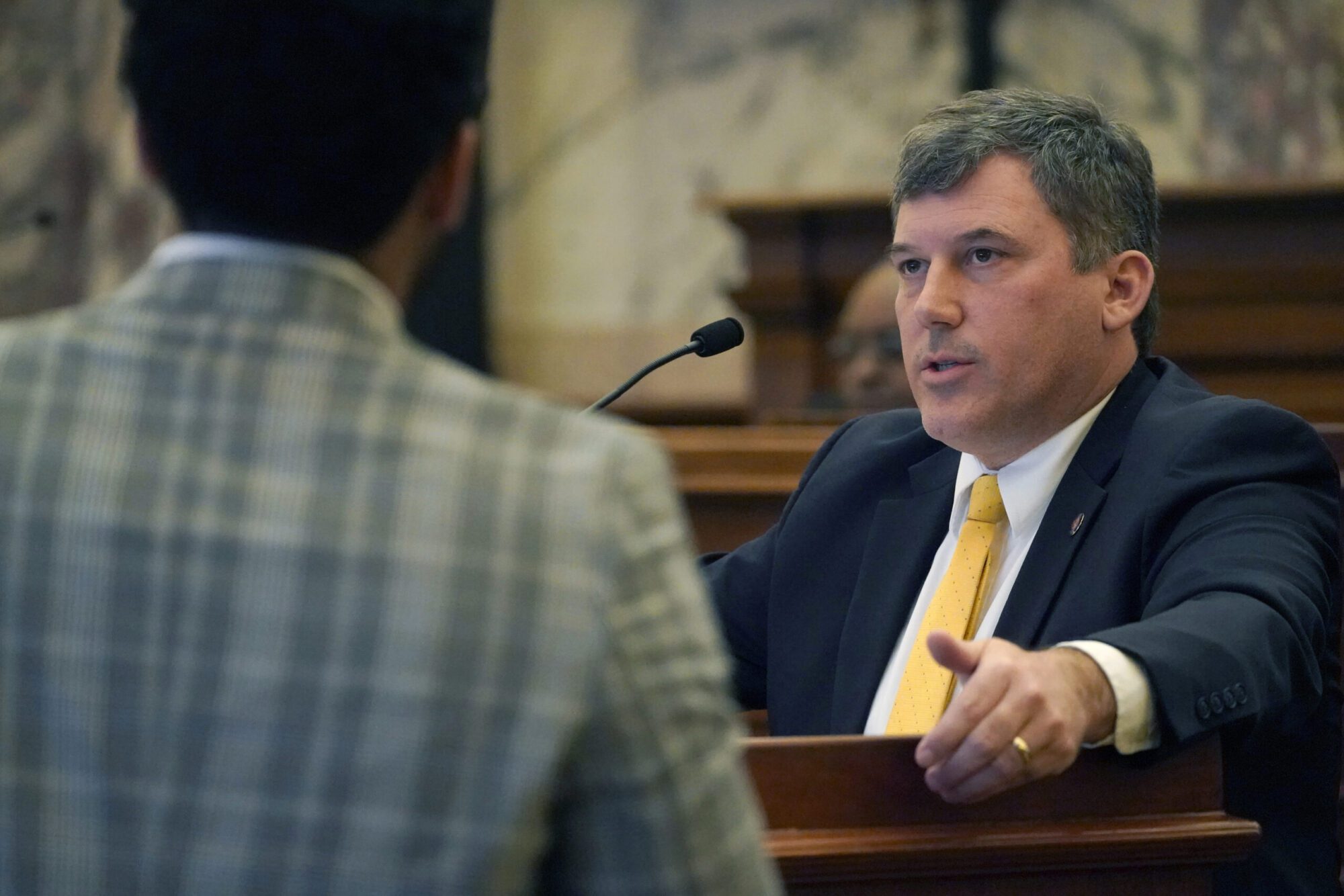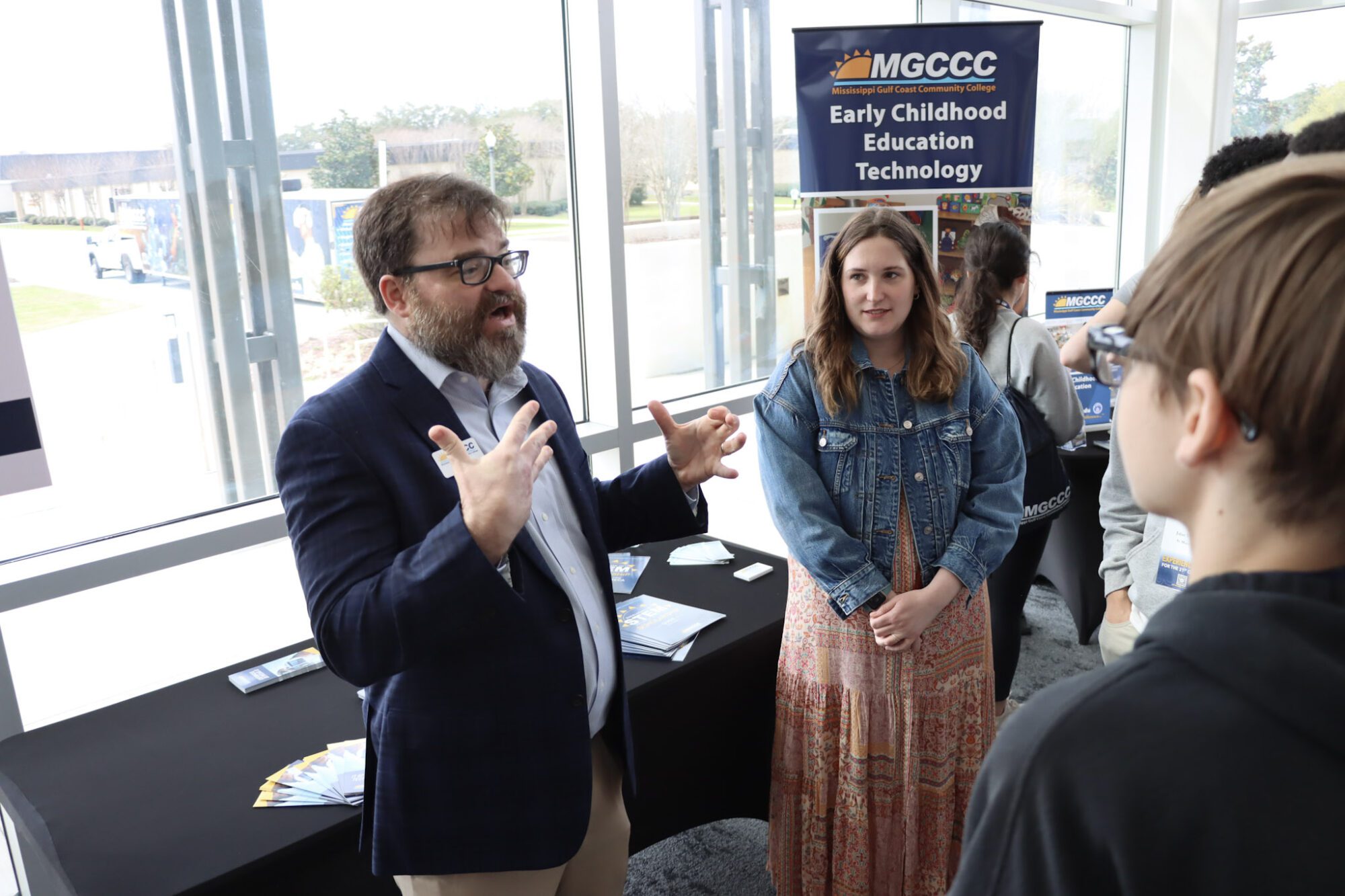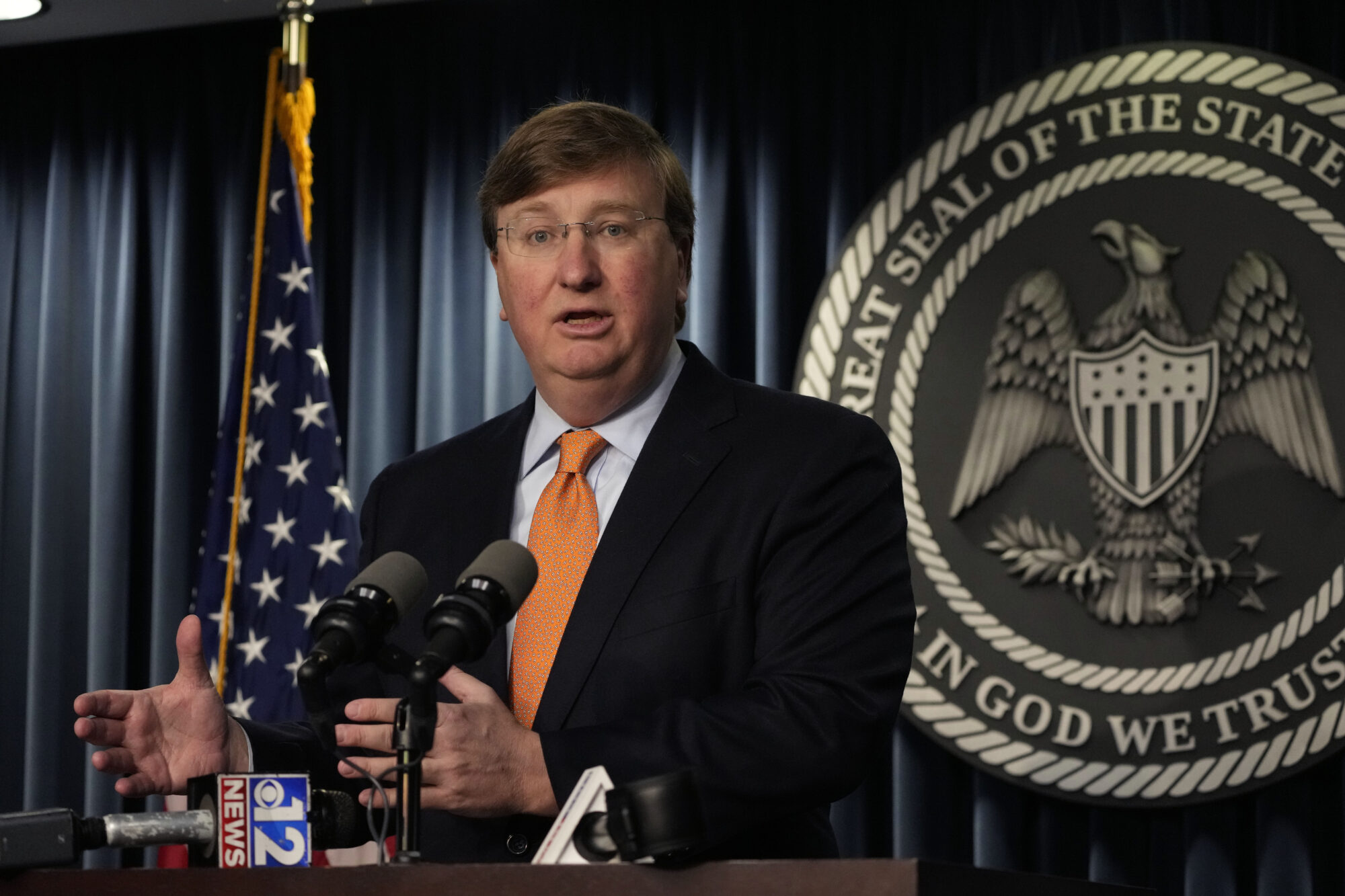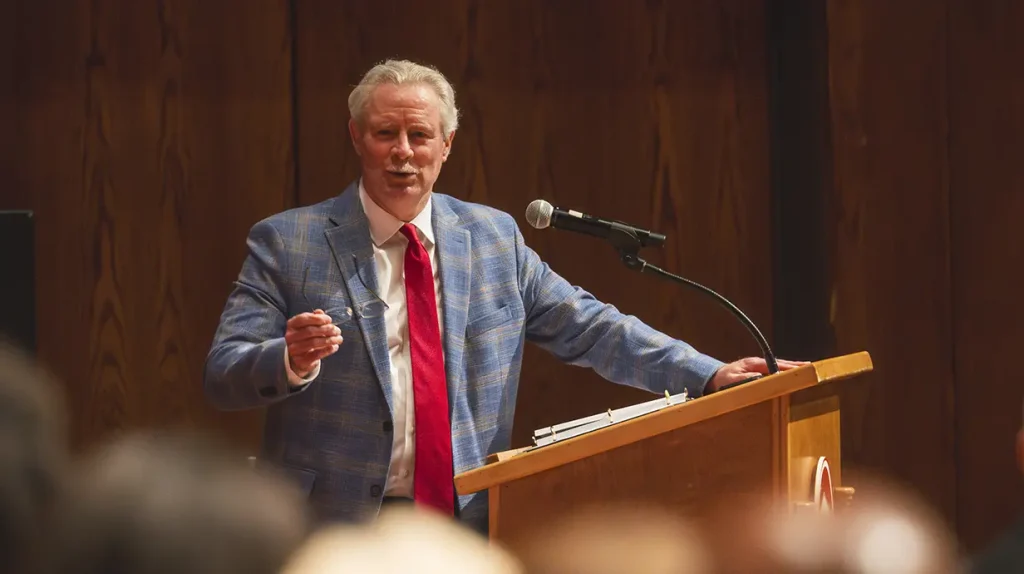
State Sen. Daniel Sparks speaks in the Chamber at the Mississippi Capitol in Jackson, Thursday, March 2, 2023. (AP Photo/Rogelio V. Solis)
Listen to the audio version of this article (generated by AI).
- The task force was appointed in the 2025 session to explore ways of ensuring people who need assistance have more holistic, quicker access to services.
In an effort to ensure Mississippians have easier access to aid through various state agencies, the Legislature has been compiling information for potential legislation through the “One Door Policy” Task Force.
During Tuesday’s hearing, representatives with the workforce development side presented information on the services they offer as lawmakers consider how to implement a “One Door” policy.
Courtney Taylor, Executive Director of AccelerateMS, kicked the meeting off by acknowledging Mississippi has a need to push strategies that lead to higher wage occupations.
To that end, Mississippi Department of Employment Security Director William Ashley described how WIN Job Centers in the state are working to ensure every resident is prepared for the workforce. The goal is to help Mississippians gain access to developmental services and become employed quicker.
Ashley described how out of the more than 140,000 manufacturing jobs in the state, less than half are considered advanced industries. These are higher paying jobs often in automotive manufacturing, industrial maintenance or shipbuilding.
“So, the goal is to upskill the people who have the barriers to the labor market and then hopefully they can catch on with one of these higher value-added industries,” he said.
Of their total funding, close to 55 percent is spent on training for potential job applicants, with the remainder going to career services. Ashley said about $25.25 million is spent on career training.
“And that compares to other states above us like Alabama at $26.4, as well as Arizona at $26.9 (million),” he added.
Participants typically do not enter the workforce due to factors such as a low income. According to the most recent data from the U.S. Bureau of Labor Statistics, Mississippi’s labor force participation rate sits at roughly 56 percent.
“So, again, we’re dealing with people that have barriers to the labor force,” Ashley described.
As a federally funded program, Ashley said funding has dropped over the past several years and more cuts are expected. To adjust to the changing political times, Ashley said technology has helped fill gaps where cuts had to be made. Ultimately, however, continued federal funding cuts will lead to less people being served.
“We can only sharpen our pencils so sharply,” Ashley said.
To committee co-chair State Senator Daniel Sparks (R) some of the skills being taught in the training programs should have been picked up earlier in life, such as timeliness and preparedness.
“Looking at it holistically, that’s something that your percentage of people who need that training is directly proportional to the people who didn’t get it at home or didn’t get it in lower education,” Sparks said.
Ashley added that the cuts are due in part to the success of the program, which is partially tied to unemployment rates.
“We’re opening a job opening, and we’re successfully having a hire,” Ashley said when asked about the cuts by Sparks.
These cuts indicate an ever-growing need to streamline services, Sparks noted.
“I think we’re going to see this across all of government, federal, state, that we’re going to need to run more lean, which is why we’re trying to look at the very things that we’re doing,” Sparks said.
For those who decide not to complete high school there are other options, such as seeking a diploma or GED through a program offered at one of the state’s community colleges.
Bronwyn Robertson, Program Specialist for Workforce and Employer Engagement for the Mississippi Community College Board, said institutions offering this service served 8,800 individuals last year. That total is comprised of primarily individuals who dropped out of high school and are considered deficient in basic skills by federal guidelines. Such basic skills include having an eighth-grade level understanding of math and reading.
“To be quite honest, I would probably say 90 percent of the individuals that walk through our doors do not read or do math on an eighth-grade level,” Robertson said.
Estimates show that about 70 percent of participants are below the sixth-grade level.
The average age of participants in the program is 27, and of the nearly 9,000 people who went into the program last year, some 6,700 stayed. Additionally, Roberston said cuts to the program have led to it being offered part-time instead of full-time as cuts have also been seen in the number of instructors and classes offered.
To help participants move through the program faster, a Total Transcript component has been added that incorporates applied math and workforce document aspects. Robertson said prior to that change about 1,775 diplomas were issued, but after implementation of Total Transcript that number increased to 2,300 this year.
“So, that is something that we’re very proud of. We think we’re going to see a lot more of that this next year,” Robertson described.
The Mississippi Department of Rehabilitation Services also provides assistance to help those with mental or physical disabilities become part of the job market. Samandra Murphy, Chief of Staff for the Mississippi Department of Rehabilitation Services, said the program is federally funded through a grant that requires a 21 percent state match. Not only is job placement counseling available, but in some instances, physical restoration through surgery may be available for those who cannot afford it. The aim is for “competitive integrative employment.”
As part of a recent shift to ensure people who are not currently employed are connected with a job, training is ongoing to identify those who are disabled and could potentially work but choose otherwise. This includes entering schools to identify students with disabilities who are not preparing to enter the workforce.
“We’re actually holding eligibility training to get our counselors more versed in what it looks like for an individual who would simply not enter the workforce would it not be for MDRS,” Murphy said.
In terms of food assistance, the committee was versed on upcoming changes to the Supplemental Nutrition Assistance Program, or SNAP, as part of the passing of the “One Big Beautiful Bill.”
Shenetta Drone, Deputy Executive Director for Economic Programs with the Mississippi Department of Human Services, said new language in that law will lead to penalties for reporting error rates above 6 percent. Rates above that threshold, which nearly every state in the nation currently exceeds, will equate to increased match rates for states. States have the option to use the error rate from the 2025 or 2026 fiscal years.
Drone said Mississippi’s most recent error rate was 10.69 percent, equating to a potential match penalty of about $128 million if penalties were assessed today. The error rate is so high due, in part, to the way samples are collected by the federal government, which is random and only includes small samples of the SNAP population. As such, the error rate is not an indication of fraud, she said, but more the result of a client’s failure to report income and other changes, even if they are unintentional.
Drone suggested Mississippi obtain its own reporting systems to keep more accurate rates that can be used to counter the small samples used by the federal government.
Another change to the federal funding of SNAP involves an increased match rate for states for administrative expenses from 50 to 75 percent, she said.
The “One Door Policy” Task Force was formed by the Legislature in the 2025 session to study workforce and social service reform in Mississippi as the state looks to implement a “One Door” policy. The goal is to improve the state’s labor force participation rate and raise the earning capacity of working Mississippians.
READ MORE: Mississippi explores “One Door” policy to integrate social programs, workforce development
After reviewing labor data, educational opportunities, workforce needs, and social programs, among other relevant information, the task force is to report its findings and recommendations for proposed legislation to the Legislature on or before December 1, 2025.











